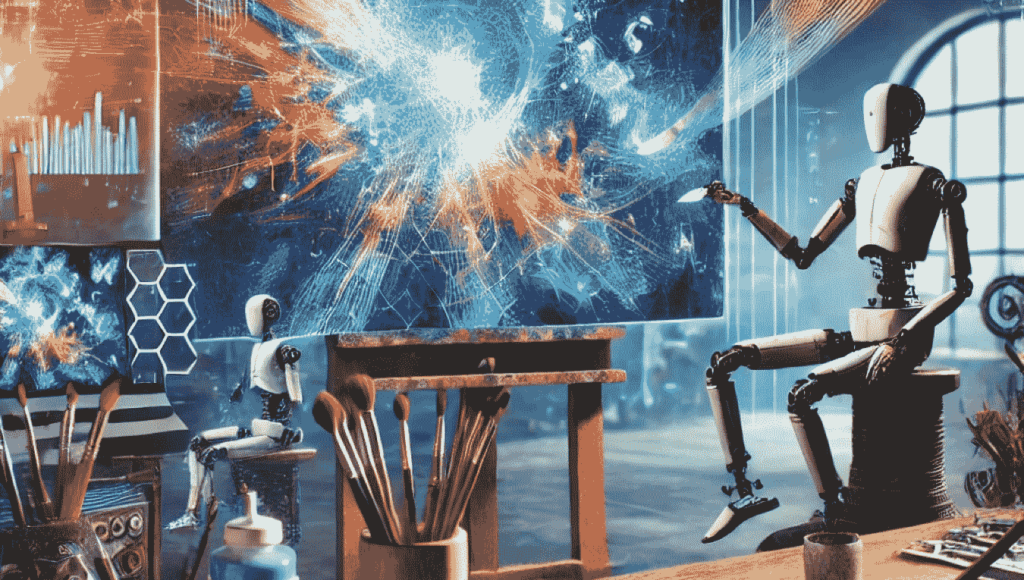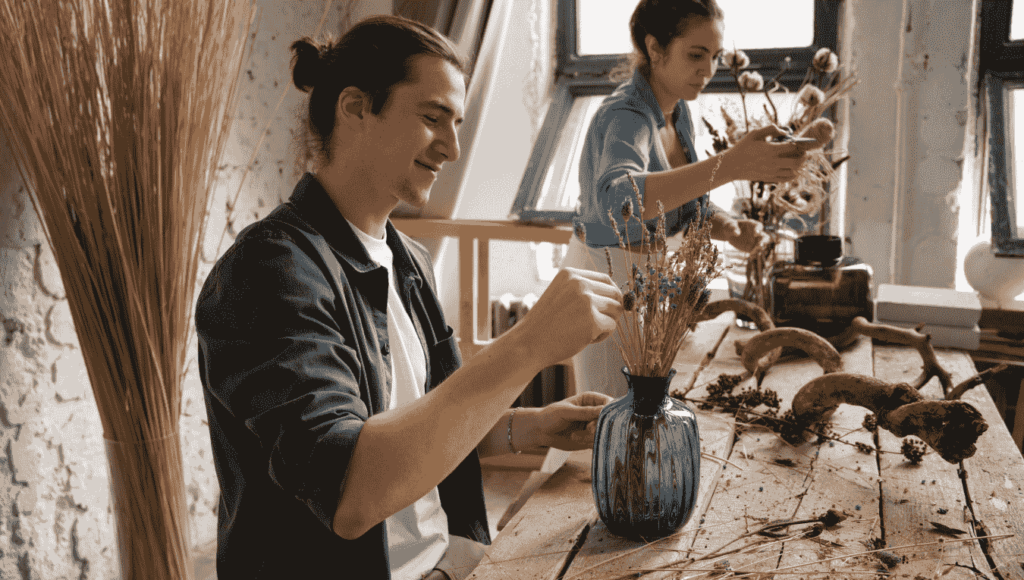Art
AI in Art: How Technology is Shaping the Future of Creativity
by: Podelit

Art has always evolved alongside humanity, reflecting our societies, values, and technological advancements. Today, we’re witnessing a groundbreaking shift: the integration of artificial intelligence (AI) into the art world. From creating surreal digital paintings to composing symphonies, AI is not just a tool but a collaborator in the creative process. But how is this technology shaping the future of creativity? Let’s explore.
The Intersection of Art and Technology
Art and technology have always influenced each other. The invention of the camera, for example, revolutionized how we document reality, pushing painters toward abstract and impressionist styles. Similarly, digital art tools expanded creative possibilities, enabling artists to design intricate 3D models or lifelike animations.
AI represents the next frontier. Unlike traditional tools, AI doesn’t just assist; it actively generates, interprets, and learns. Tools like OpenAI’s DALL·E and Google DeepDream allow anyone to create art by inputting simple prompts. This democratization is one of the most significant shifts in art’s history, bridging gaps between technology and creativity.
How Does AI Create Art?
To understand AI-generated art, we need to look under the hood. Most AI art tools rely on technologies like Generative Adversarial Networks (GANs). A GAN consists of two parts:
- The Generator creates images from scratch.
- The Discriminator evaluates these images and decides whether they meet the desired criteria.
This back-and-forth process mimics how humans improve through feedback, allowing AI to produce highly sophisticated results.
For example, platforms like MidJourney or Stable Diffusion take textual prompts (like “a futuristic city under a glowing moon”) and translate them into detailed, visually stunning images. In music, AI tools like AIVA compose melodies by analyzing classical compositions and replicating patterns that evoke human emotions.
Artists and AI: Rivals or Collaborators?
The relationship between artists and AI has sparked debate. Is AI a threat to human creativity, or can it be a powerful ally?
The Case for Collaboration
Many artists view AI as a new kind of brush—a tool to expand their creative horizons. For instance, artist Mario Klingemann, a pioneer in AI art, uses algorithms to create works that challenge conventional aesthetics. Similarly, Grammy-winning musician Taryn Southern collaborated with AI to produce her album, blending human intuition with machine precision.
The Fear of Replacement
On the flip side, some fear AI could undermine traditional artistry. After all, if an algorithm can produce a museum-worthy painting or an award-winning song in minutes, where does that leave human creators?
However, AI lacks intent and emotional depth—the very qualities that make human art resonate. Instead of replacing artists, AI can free them from repetitive tasks, letting them focus on storytelling, meaning, and innovation.
The Ethical Challenges of AI Art
AI in art also raises ethical questions.
1. Copyright and Ownership
Who owns an artwork created by AI? The programmer who coded the AI? The artist who gave the input? Or the AI itself? These are complex questions that current copyright laws struggle to address.
2. Authenticity and Originality
Critics argue that AI art lacks the soul and authenticity of human-made works. While it can mimic styles and generate novel combinations, AI cannot feel or express personal experiences. This limitation often makes AI art feel detached despite its technical brilliance.
3. Bias in AI
AI learns from existing data, which can embed biases present in the dataset. For example, if an AI is trained on historically Eurocentric art, it may underrepresent diverse styles and perspectives. Addressing these biases is crucial for ensuring inclusivity in AI-generated art.
The Future of Art: Humans and AI Hand in Hand?
As we move forward, AI and humans will likely collaborate more closely, opening up exciting possibilities for the art world.
1. Accessibility and Inclusion
AI tools make art more accessible. Aspiring creators with little technical skill can now bring their ideas to life. For example, someone with no musical training can compose a soundtrack using AI-powered music software. This democratization allows more people to express themselves creatively.
2. Redefining Creativity
AI challenges traditional notions of creativity. Is art about the process or the outcome? If an AI produces a stunning painting, does the absence of human effort diminish its value? These questions push us to rethink what creativity means in a digital age.
3. New Art Forms
AI could give rise to entirely new art forms. Imagine immersive installations that respond to viewers’ emotions in real-time or novels co-written by humans and AI that adapt to the reader’s preferences. The possibilities are endless.
AI is transforming the art world in profound ways. It’s not just a tool but a collaborator, pushing the boundaries of what’s possible. While challenges like ethics and bias remain, the potential for innovation and inclusivity is immense.
As we stand at this crossroads of art and technology, one thing is clear: AI is not here to replace human creativity but to amplify it. The future of art lies in collaboration, where humans and machines work together to create something truly extraordinary.
What are your thoughts? Can AI ever truly capture the depth of human creativity, or will it remain a tool in our hands? Share your perspectives below—we’d love to hear from you!


